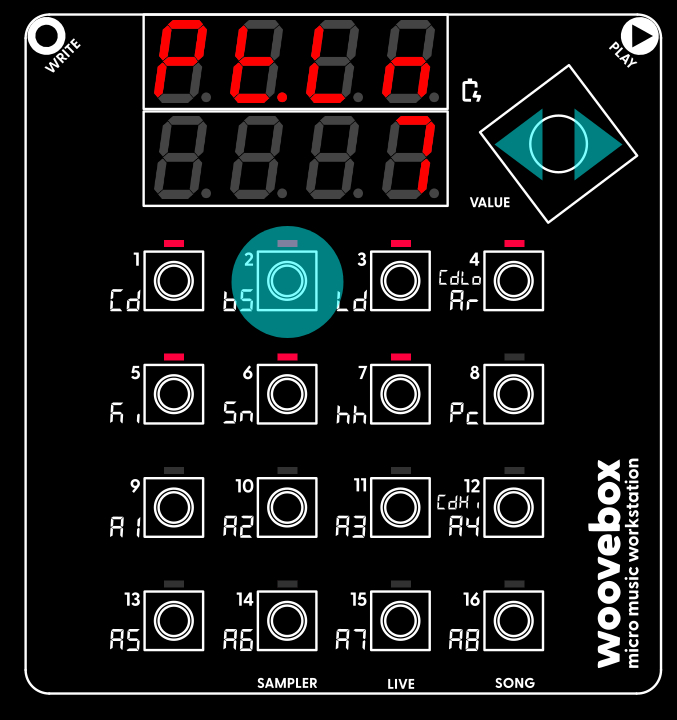Program an arpeggio

Switch to the arpeggio (4/Ar) track and use the value knob to scroll to the "Glob" page. Press key 4 to verify the state of the "FLW.C" ("FLLW CHRD") parameter is set to "CLS.A". If it is not set to "CLS.A", change it to "CLS.A" by holding down key 4 and turning the value knob.
Similar to what we did to the bassline, we just made sure that any arpeggio track notes will be adapted to the chord being played. However rather than adapting the notes to the root note of the playing chord, the notes will be "pulled" to the closest note that the chord consists of.
Arpeggios are short runs and are typically not as long as full patterns (e.g. they are typically not as long as, say, our bassline pattern). Use the value knob to scroll to the "Pttn" page. Change the "Pt.Ln" ("Ptrn Len" / pattern length) parameter under the 2 key. It is likely set to 16 (playing all of the 16 steps of the pattern). However, for an arpeggio, typically short runs are more suitable. Set "Pt.Ln" to, for example, 5 or 7.
Switch to the Sequencer page (use the value knob to scroll to it, or use the shortcut by pressing the value knob). Press play. You should now see the play head cycle between the first few steps, rather than all 16 for this track.
All we need to do now, is add some notes. Again, some random notes will do for now, if you wish. You will notice you are not able to program notes past the reduced pattern length; the device will respond with ("Chng Len"; aka "please change pattern length first!").
Press play to hear your newly created arpeggio. Once again you will notice the arpeggio is automatically adapted to the chord being played.
Feel free to experiment with different lengths. You will likely notice that prime numbered lengths (for example lengths of 3, 5, 7 or 11) produce the most interesting, intricate and complex arpeggio runs (think IDM, Trance), while numbers that are divisible by two or three (2, 4, 6, 8, 9, 10, 12 etc.) sound more conventional (think 80s pop, Synthwave).
Arpeggio tracks are perfect for conditional triggering and modification (see manual), allowing you to create incredibly intricate arpeggiated runs.